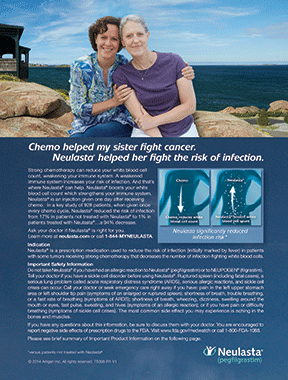Of all the interviews conducted for this issue’s agency profiles, approximately 100% of them featured some variation on the theme of “we had an interesting year” or “we zigged where others zagged.” With all due respect to those other 99 companies and the executives who lead them, the sentiment rings more true for STRIKEFORCE Communications than for any other agency.
Consider the firm’s 2014, in which it devoted much of its energy to a trio of products that you might’ve heard a thing or two about: Gilead’s Sovaldi and Harvoni and BMS’s Opdivo. “We’ve got three of the world’s biggest drugs—which is pretty cool, considering we’re not one of the world’s three biggest agencies,” quips Mike Rutstein, agency founder and CEO.
Rutsein doesn’t say this boastfully. In fact, he says it with a mixture of pride and awe in his voice. While the Gilead work boosted its profile considerably, the agency remains true to its original model and mission. Full-time head count sits at 25, as it did a year ago; to accommodate the resources-taxing Gilead business, the company relied heavily on its 300-plus-strong stable of what Rutstein calls “sharpshooters” and a new alliance with independent media agency Horizon Media. Revenues have surged to “the doorstep” of $10 million, he reports.
Yet while some have snarked that marketing transformative drugs like Sovaldi and Harvoni poses less of a challenge than, say, marketing a slightly differentiated product in a crowded category, Rutstein says that the assignments entailed far more than “hey, this cures hep.-C! Come and get it!”
“These are cures. How often have any of us worked on cures?” he asks. “These products were so unbelievable to patients and the medical community that we had to relay the groundwork and establish credibility… The dramatic-ness of change could have been seen as too good to be true.”
Thus he settled on an approach that took little for granted. It addressed potential skepticism about the efficacy of the drugs but not in a way that overshadowed patient experience. It goes back to a refrain that Rutstein has sounded many times before. “What we still see way too much of is companies espousing the benefits of brands, but through the lens of the brand and not the customer,” he explains. “Maybe that can work in established categories where there’s context in place, but not when you’re launching a cure. Getting people to rethink the way they manage their condition was a huge part of this.”
As much as Sovaldi and Harvoni are already cemented as double-mega-blockbuster successes, the company will likely spend the rest of 2015 and beyond preaching the hep.-C awareness gospel. “Two-thirds of this population hasn’t even been diagnosed yet, much less started exploring their options,” Rutstein notes. “There’s lots of work to be done to get [patients] to assess their risk, to take action, to get on their own treatment journey.”
Elsewhere, expect STRIKEFORCE to wade into the biosimilar debate on behalf of Amgen’s Neulasta, for which the agency serves as DTC AOR. The potential strategic approach? One that plays up the innovation that is Amgen’s on-body injector, which is attached to the patient’s abdomen or upper arm. “It spares them the ordeal of having to go back to the doctor [the day after chemotherapy] and get the traditional Neulasta shot to protect from infection. The biosimilars don’t have that,” Rutstein says.
From the July 01, 2015 Issue of MM+M - Medical Marketing and Media







